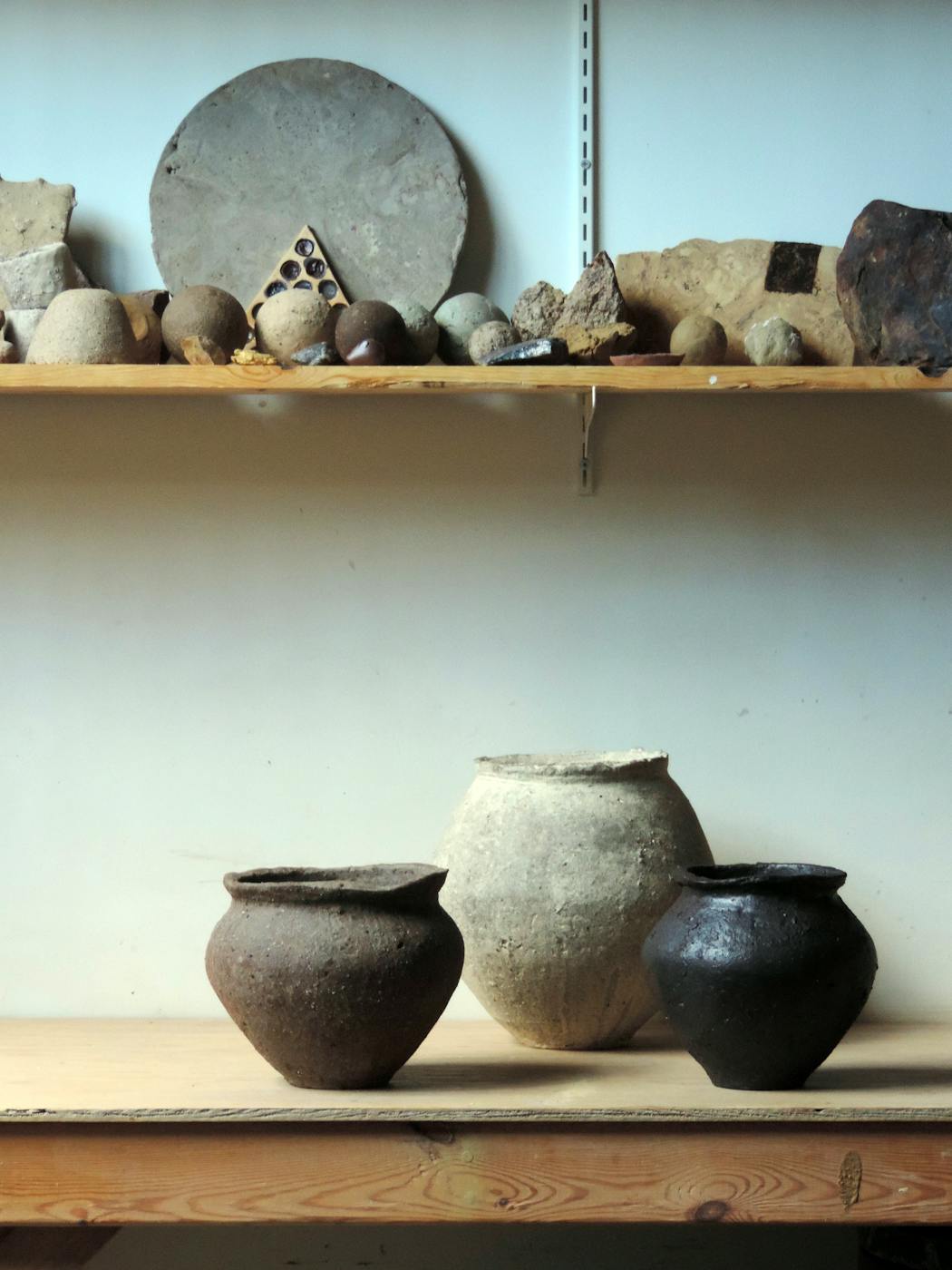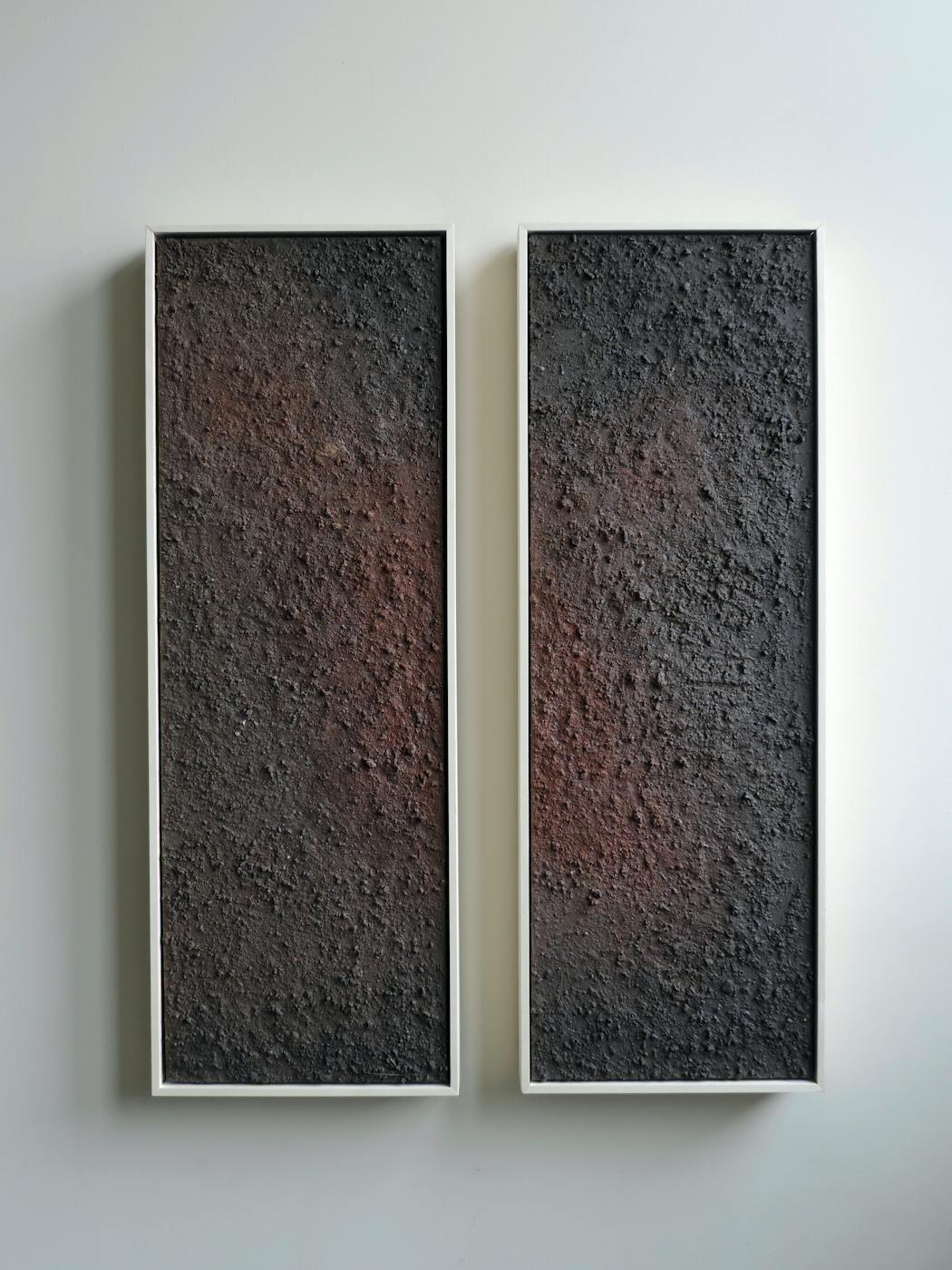Mitch Iburg, who lives in St. Paul, makes ancient-looking tableware, vessels and sculptures primarily out of clay that he digs from the earth with his own hands (and some tools). Driving his truck 2½ hours to an open valley near the Minnesota River, he comes away with 1,000 or so pounds — a quantity that will last him roughly a year. (He has permission from the mining company that owns the property.)
Clay was not where his journey began. Born in Wisconsin and raised partly in Iowa City, Iowa, Iburg, 33, studied painting at Coe College in Iowa. But he was required to take a 3-D fundamentals class and it was there that he developed an appreciation for clay and its roots in nature and antiquity.
In 2015, he applied for a residency at the Cobb Mountain Art and Ecology Project in California, partly because the studio sat on top of a clay bed. And when he settled on a place to open a workshop, Studio Alluvium, with a fellow Cobb resident, Zoë Powell, who is now his fiancée, he chose Minnesota to no small extent because he was familiar with the clay.
On top of the matter of earth was the question of fire. Throughout his residency hopping, Iburg was drawn to specialized wood-fired kilns, which he continues to use. "My work has changed in each setting in response to the clays that are available and in response to the community of other wood-fire artists in that area," he said.
Wood firing produces different results depending on the type of timber used, how dry it is and how much oxygen is let into the kiln. The clay is typically fired without any glaze, and the texture, color and markings change over the course of several days.
For his wood-fired pieces, Iburg mostly burns dead trees that have to be cut down for reasons of safety or the health of the forest. Or wood that has fallen in storms. Or the leftovers of traditional sawmills.
"At least we're putting it to work," he said.
Today he wood-fires about 40% of his pieces, using a kiln at the College of Saint Benedict in St. Joseph, Minn.
About 20% of his ceramic objects use no thermal energy at all but are left raw. These artworks are made with clay in the natural state in which he finds it, containing stones, bits of wood, pieces of brick, fossils and organic matter.
"If you were to put them in water, they would slake back into workable clay," he said. "Because of this, there's this extra element of fragility."
For more utilitarian pieces, such as teapots, he removes the bits that aren't clay. "If you were to just fire the clay on its own, with all those stones, there is a good chance that there might be a catastrophic melt," he said.
Iburg also works with an electric kiln in his studio, but he does not follow the common technique of firing clay twice — before and after glaze is put on. He has formulated glazes that can be applied to raw clay and thus require only a single firing. "That was largely a decision to cut down on the electrical usage," he said.
Iburg's works can be found in several galleries and retail sites. Tommy Zung, who owns a design store in Manhattan called Shop Zung, said he discovered Iburg on Instagram while looking for artisans "with a mindful approach to craftsmanship." He described Iburg's methods as "intimate and purposeful, from how his clay was sourced to the meditated imperfections he left to be embraced by its viewers."
For the time being, Iburg said, his unfired work is "a step that feels positive and not forced or forceful." The moment he started producing those pieces, "it just made a lot of sense because it took some of the pressure off, took some of the guilt off."




